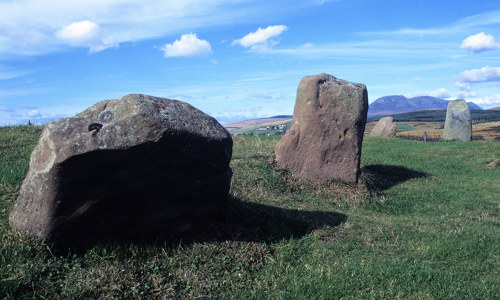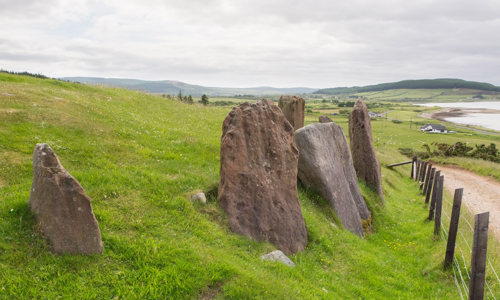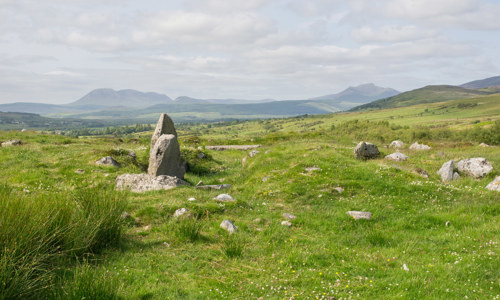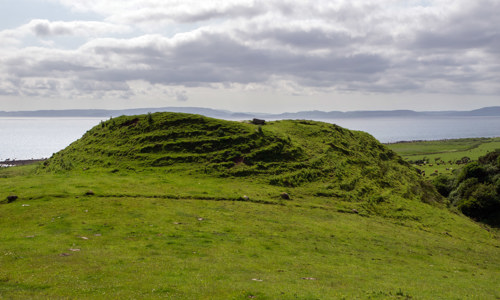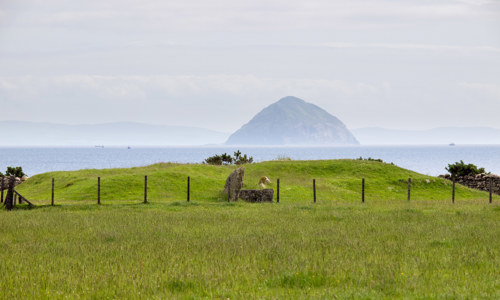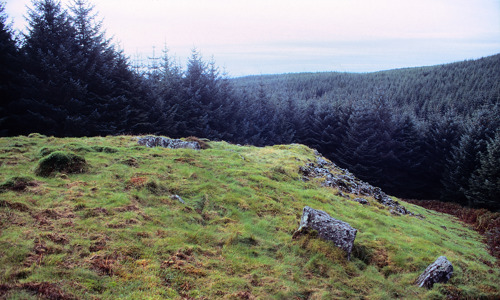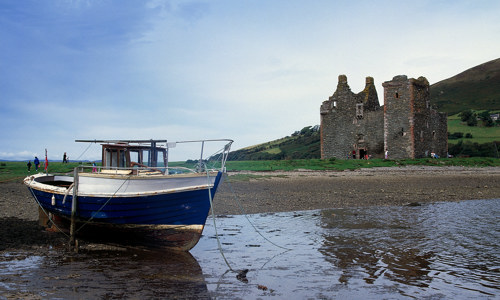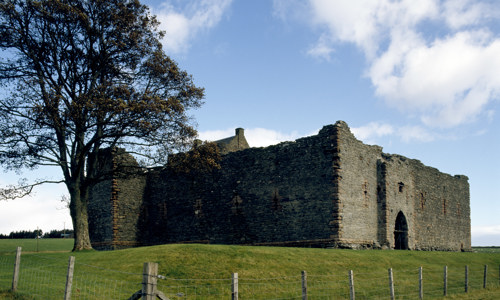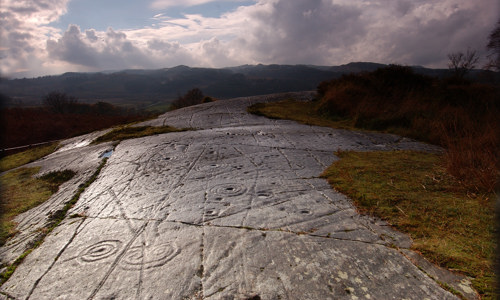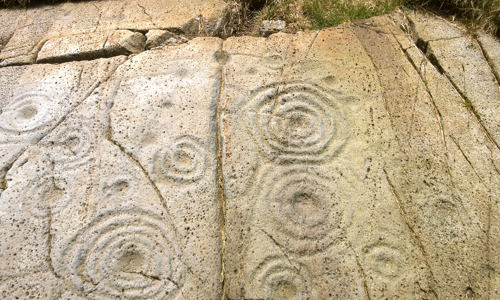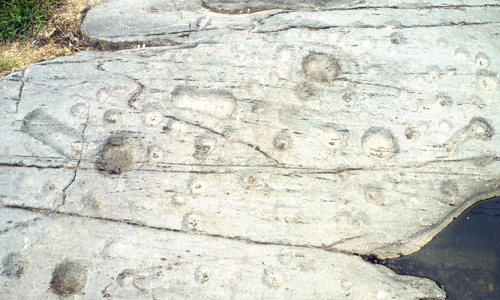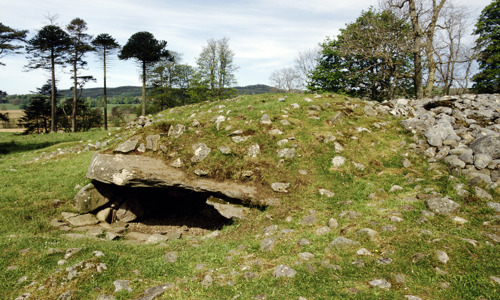History
A rich archaeological landscape
The upstanding monuments include stone circles, standing stones, chambered cairns, hut-circles and field systems.
Excavations have shown that earlier timber monuments underlie those visible on the surface, but only a tiny part of the moor has been excavated. It is very likely that there are many other archaeological remains beneath and between the visible sites.
The stone circles
The six stone circles which are in our care are located immediately east of the now-derelict Moss Farm. The stone circles are the most prominent monuments on the moor today, erected in about 2000 BC. However, archaeological excavation has demonstrated that they were a later phase in a long history of human activity on Machrie Moor.
The earliest known activity is the digging of pits and a gully at Circle 11 around 3500 BC. Timber circles were erected around 2500 BC. The area was then cultivated, before the stone circles were built on exactly the same sites as their timber predecessors.
A wide variety of circles are found on Machrie Moor. Only the one closest to Moss Farm consists of two concentric rings. The first is an inner circle of eight round-topped granite blocks about 1.2m high. The second is an outer circle of 15 granite blocks of slightly smaller stature.
Some circles are formed of granite boulders – low, squat and grey. Others are built of tall, imposing, red sandstone pillars. In one circle the builders have alternated granite and limestone.
Undoubtedly the most striking is Circle 2. This is now represented by three tall, slender stones (up to 5.5m high), but originally consisted of seven or eight stones. One of its fallen stones now lies in two pieces, fashioned into millstones which never made it to their 18th-century mill.
Folklore and ritual
The circles were associated with the religious and ceremonial activities of the Neolithic and Bronze Age farmers living on Machrie Moor. The stone circles aligned with a prominent notch at the head of Machrie Glen, where the midsummer sunrise would have been visible.
Later on, the circles were used for burials, including cremations and inhumations, perhaps for prominent members of the community. A fine food vessel was found in the middle of circle 2.
The stone circle known as ‘Fingal’s Cauldron Seat’ is named after Fingal the giant – a mythic figure probably derived from the Irish Fionn Mac Cumhail. One of the stones has a hole in it. This is where Fingal is said to have tethered his dog Bran while he ate a meal in the inner ring.


